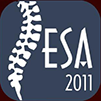Article Type
Original Study
Abstract
Background: The cervicothoracic junction (CTJ) is the transition between the mobile cervical spine and the rigid thoracic spine, making it a biomechanically complex and potentially unstable region. Acute traumatic fractures and dislocations at the CTJ are often misdiagnosed due to suboptimal imaging studies and associated severe injuries to other vital organs. Prompt evaluation of the C7–T1 junction is crucial for maintaining spinal stability in polytrauma patients. Management of the unstable CTJ is particularly challenging because significant biomechanical forces act at this part of the spinal column. Injuries in this area often result in traumatic paraparesis or paraplegia, particularly affecting younger individuals. Accurate imaging with CT and MRI is essential for diagnosing these injuries, as X-rays are often unreliable. The unique biomechanics of the CTJ, including its narrow spinal canal and transition from the cervical vertebra’s lateral masses to the thoracic spine’s transverse processes, make it particularly vulnerable to forces that can disrupt spinal stability. Unstable CTJ fractures could be addressed using anterior, posterior, or combination surgical approaches. The study aimed to assess different modalities of surgical management and their outcome.
Methods: This mixed retrospective and prospective case series study design included 13 patients aged 18–80 who underwent surgery for acute CTJ fractures (2019–2024). It assessed neurological status, fracture classification using the Subaxial Injury Classification (SLIC) system, surgical approach, and implant details, with follow-up lasting at least 12 months. Outcomes included neurological improvement assessed via the American Spinal Injury Association (ASIA) Impairment Scale, radiographic fusion evaluated using cervicothoracic CT imaging, pain levels using Visual Analog Scale (VAS), and complications.
Results: We performed surgical interventions on 13 patients with CTJ fractures, including 10 males (77%) and three females (23%) aged 40 ± 13.3 (21–63) years. The injuries were primarily caused by falls from height in eight patients (61.5%) and road traffic accidents in five patients (38.5%). Fractures were classified using the SILC system, and the most frequent score was 7 in four patients (30.7%). MRI showed spinal cord compression in 12 patients (92.3%). Moreover, 11 patients (84.6%) underwent a combined anterior and posterior approach, while two patients (15.4%) had a posterior-only approach. Postoperatively, 10 patients (77%) showed neurological improvement at 12-month follow-up. Three patients (23%) achieved complete neurological recovery, evaluated by the ASIA impairment scale. Complications included bed sores in two patients (15.4%), which were treated conservatively. All patients exhibited radiological evidence of bone fusion, and the mean hospital stay was 6.23 ± 1.09 (5–8) days.
Conclusion: Surgical treatment of unstable CTJ injuries restores stability, enabling early mobilization and rehabilitation with minimal complications.
Keywords
Cervicothoracic junction, Cervicothoracic injury, Cervicothoracic fracture, Spinal cord injury
How to Cite This Article
Salim, Mohammud; Elnoamany, Hossam; Ali, Sherif H.; Dorrah, Mohammed; and Negm, Hazem
(2025)
"Outcomes of Surgical Management of Cervicothoracic Fractures: A Case Series,"
Advanced Spine Journal: Vol. 44
:
Iss.
1
, Article 8.
Available at: https://doi.org/10.57055/2974-4822.1323




















